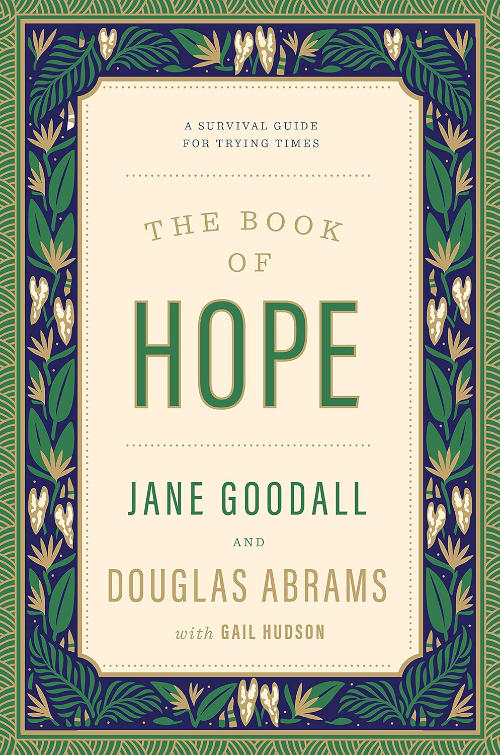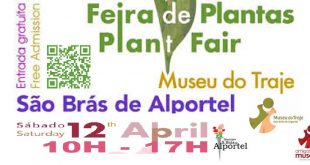Saturday 5th October 2024.

Jane Goodall, a British scientist and environmental activist, asked the German doctor and scientific journalist Eckart von Hirschhausen: “If we as humans claim to be the smartest species on the planet, why are we destroying our own home?” This question can be found in the new bestseller ‘Unlearn CO2 – Time for a climate without crisis’, edited by Klaudia Kemfert, Julian Gupta and Manuel Kronenberg. The book, in which 14 authors from very different walks of public life guide readers towards a climate-friendly future in 14 different essays, is very special. And because the question posed at the beginning is a perfectly valid one, I immediately grabbed my copy of ‘The Book of Hope’ by Jane Goodall from the shelf and began reading the two books side by side. We are all contemporaries who couldn’t be more different from one another, and yet we are all the same. Because the laws of physics apply to all living beings – and the laws of nature are non-negotiable.
“It’s hard to save the world on a voluntary basis when others are destroying it full-time.” True or false? As a doctor, the author knows that health does not begin with a pill, an operation or an MRI scan, but with five basic necessities of life: all people need clean air to breathe, clean water to drink, tasty plants to eat, tolerable temperatures and peaceful coexistence…
The fact that fossil energy policies cause massive damage to health is an issue that until now had not previously been on the agendas of doctors. Traditionally, most doctors stay clear of politics. Every day, however, we hear on the news that all these foundations of life are under serious threat. That is why, Hirschhausen writes, we need to broaden our view about our personal health to include so-called ‘planetary health’ – or, in other words: Healthy Earth – Healthy People.
“Understanding climate protection as health protection opens up a perspective that is important for each of us and for civil society. Becoming more visible, public and political means recognising that the solution to our problems will not be found in a medical innovation. We can lower an excessive body temperature, i.e. fever, with medication,” Hirschhausen writes. But there are no pills for an excessive outside temperature. No calf compresses will help, only an effective policy and consistent adherence to climate neutrality and zero emissions: the end of coal, oil and gas; the rapid and consistent switch to renewable energies.
 Why are the deaths caused by heatwaves not a public issue? Twenty years ago, during the first major heatwave in 2003, 70,000 people died across Europe. If a bomb went off in a football stadium and 70,000 people died, everyone would be thinking about how to prevent something so terrible from happening again. Is climate protection no longer an issue? Overheating affects our health – everywhere in southern Europe, in Africa, Central America, and especially in India. Entire regions of the world have already become nearly uninhabitable. Our brains are losing control of themselves. ‘Cities become real heat traps during hot spells.’
Why are the deaths caused by heatwaves not a public issue? Twenty years ago, during the first major heatwave in 2003, 70,000 people died across Europe. If a bomb went off in a football stadium and 70,000 people died, everyone would be thinking about how to prevent something so terrible from happening again. Is climate protection no longer an issue? Overheating affects our health – everywhere in southern Europe, in Africa, Central America, and especially in India. Entire regions of the world have already become nearly uninhabitable. Our brains are losing control of themselves. ‘Cities become real heat traps during hot spells.’
In areas known as heat islands, for example in areas with heavily sealed surfaces and little greenery in densely built-up city centres, the temperature can be over ten degrees higher than in the surrounding area.’ (…)
Hirschhausen asks: ‘How many more temperature records, floods of the century, millennium storms and forest fires do we actually need to realise that this century has only just begun?’
Change of scene. Jane Goodall’s Book of Hope from 2021/2 is more relevant today than ever before. But what is hope anyway? And is hope real? These and similar questions are at the heart of the Book of Hope by author Douglas Abrams and behavioural scientist Jane Goodall. The result is a biography of Goodall, a combination of interview and novel, spiced up with further information about our environment and some ethical and philosophical considerations.
Jane Goodall (90), born in London in 1934, is considered one of the world’s most important natural scientists, someone who does not just focus on facts and measurable data. As you can read, she has acquired her knowledge herself over the course of her life – as a simple office worker, she was entrusted, almost by chance, with the task of studying the behaviour of chimpanzees in the middle of Tanzania. What followed was a life filled with obstacles and personal misfortunes. However, according to its introductory chapter, her book is intended to be an invitation to hope. It seeks to show us how not to lose heart even in difficult times. Jane (in the book, the reader is on first-name terms both with her and her co-author) has several reasons for believing in this.
 Firstly, there is our human intellect, which differs significantly from that of animals, and which Jane Goodall does not equate with intelligence. As in the rest of the book, one senses again and again that she has dealt with such questions in detail. The challenges are particularly great when it comes to saving the environment. But humans have already planned, created and developed so many things: shouldn’t they be able to find solutions to them? With sentences such as ‘I feel awe and fascination for this world (…) But we are destroying it before we have fully understood it’, Abrams and Goodall automatically come to their second reason for hope: the resilience of nature.
Firstly, there is our human intellect, which differs significantly from that of animals, and which Jane Goodall does not equate with intelligence. As in the rest of the book, one senses again and again that she has dealt with such questions in detail. The challenges are particularly great when it comes to saving the environment. But humans have already planned, created and developed so many things: shouldn’t they be able to find solutions to them? With sentences such as ‘I feel awe and fascination for this world (…) But we are destroying it before we have fully understood it’, Abrams and Goodall automatically come to their second reason for hope: the resilience of nature.
One of the examples given is the amazing story of the ‘Survivor Tree’: a few weeks after the terrorist attack on the World Trade Centre in 2001, half of a charred Chinese pear-tree was found during the clean-up work in the devastated area, with a small branch, still intact, hanging from it.
The tree was given another chance; an attempt was made to replant it in a nursery – and it proved successful. The tree was moved back to its original location and now blossoms and bears fruit every year.
Jane Goodall is not only enthusiastic about animals and plants, but also about children. For her, the young generation is a third aspect of hope. We learn about this in the next chapter, which also marks the beginning of another phase in the life of this tireless woman.
In 1991, she founded the youth organisation ‘Roots & Shoots’ in Tanzania. As my research shows, the movement is now represented by groups in many countries around the world and is committed to social issues as well as the environment.
For Goodall, the underlying message is that everyone, whether young or old, leaves their mark on this planet – but that it is up to them to decide what that mark will look like. The fourth aspect, the indomitable fighting spirit of everyone, fits in with this. The activist uses it to describe inner strength and the courage to pursue a specific goal, even in the face of overwhelming odds. Personalities such as Martin Luther King Jr. and Mahatma Gandhi exemplified this fighting spirit. But she also recognises it in many other people who have not become famous, such as those who have overcome a serious illness. At the same time, she makes us realise how much we need one another and how helpful mutual aid and social support are.
Publishers:
Unlearn CO2 – Ullstein
The book of hope – VIKIN
 Eco123 Revista da Economia e Ecologia
Eco123 Revista da Economia e Ecologia


